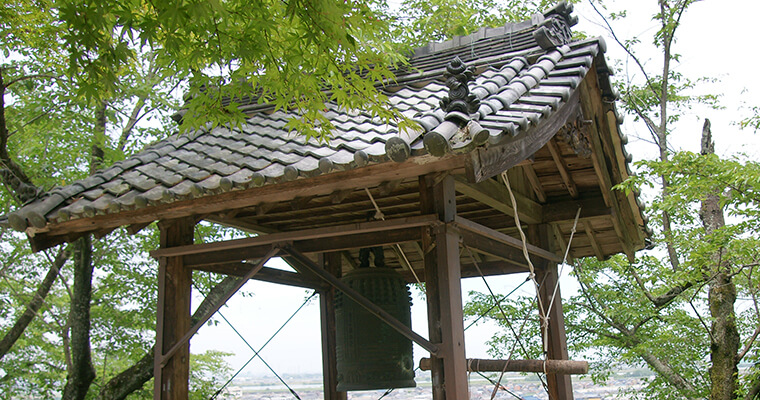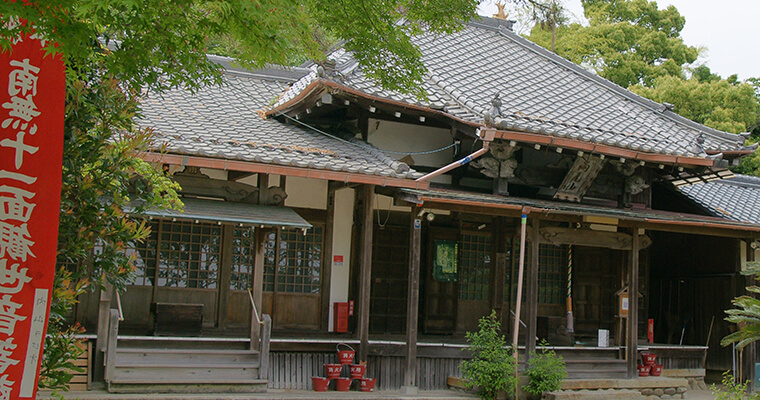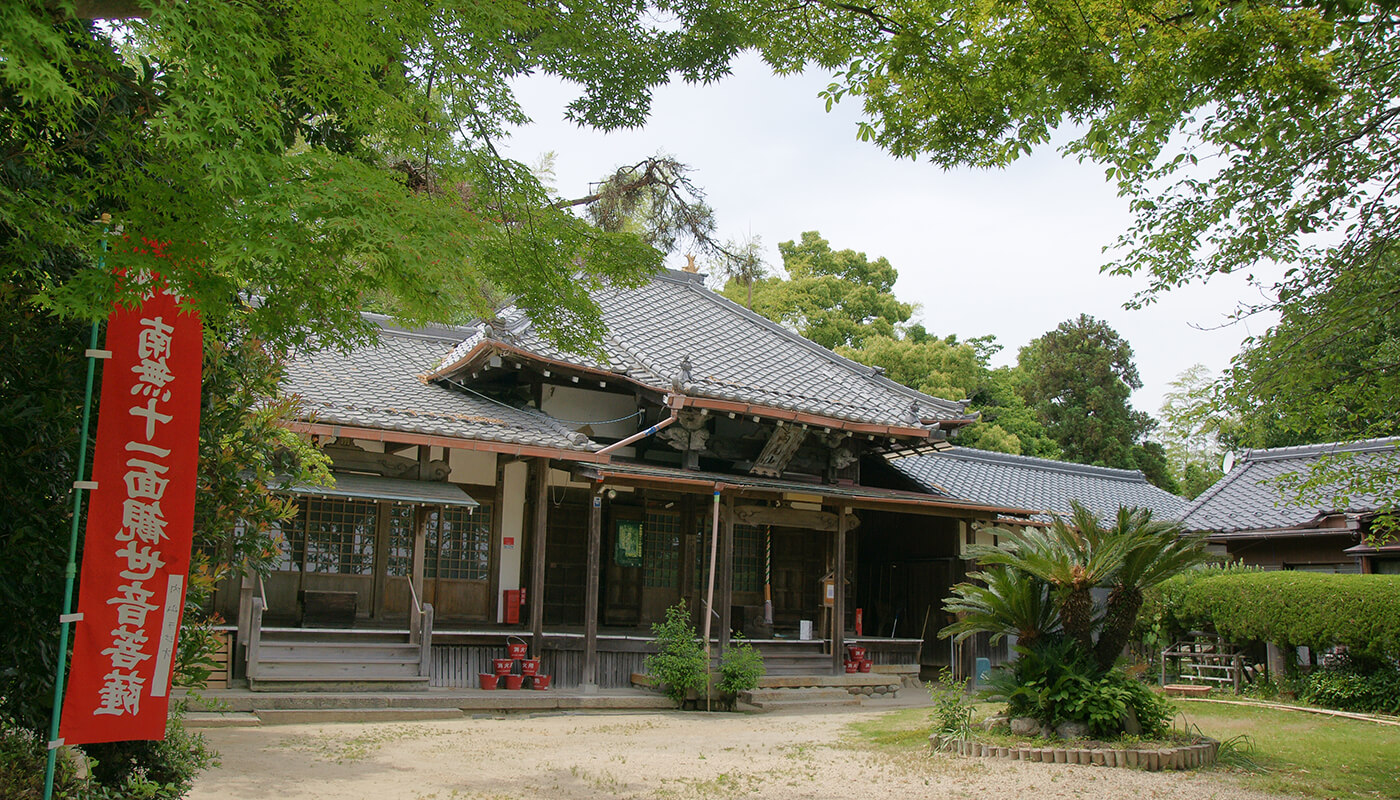Number 32Hichō-ji temple
History of the temple
Hichō-ji temple stands in Yamanoshiro area of Fukaya district in Kuwana city. It lies on the highland from which a wide view of Kiso river, Nagara river, Ibi river, Nagoya city, Nōbi plain and Mount Ontake can all be seen.
There are many Buddhist statues enshrined at the temple. The main statue worshiped in Hichō-ji is a 181cm (5ft11in) high Jūichimen Kannon (Eleven-Faced Kannon). The other statues are: statue of Kūkai (Kōbō Daishi, 774-835, the founder of Shingon sect), Dainichi Nyorai (Great Illuminating Buddha), Zenkō-ji style triad of Buddha Amida (Buddha of Infinite Light), Batō Kannon (Horse-Headed Kannon), Senju Kannon (Thousand-Armed Kannon), Koyasu Jizō (Bodhisattva Jizō who looks over children), Fudō Myō-ō (Immovable Wisdom King). The portrait of Kūkai, which is one of the temple’s treasures, is registered as Kuwana city Cultural Property.
In ancient time Hichō-ji stood in Bōgatani valley within Fukaya village grounds. It was a famous Shingon school temple with 99.2ha (245.12ac) of land and 12 sub-temples within its precinct. Unfortunately many of its buildings, statues, sutras and documents were lost in a fire in 1571, during the fights of the first “Great Unifier” of Japan Oda Nobunaga’s troops with the local daimyo. In 1635 the Lord of Kuwana castle Matsudaira Sadatsuna (1592-1652) visited the area. When he heard about Hichō-ji’s past, he became sad and decided to donate rice fields to the temple. Since 1660 the grandson of Sadatsuna – Matsudaira Sadashige (1644-1717) every year donated money for the prayer.
In 1702 a samurai of Kuwana province called Nanjō Santazaemon Munechika climbed Mount Amao in search for a good place to enshrine a statue of Bodhisattva Jizō. He obtained the statue some time before at Nishida village in Tamba province. In the hut standing among the ruins of the old Hichō-ji temple Munechika discovered a head of the Jūichimen Kannon statue buried in the ground. The rest of the body was burned during the wars of 16th Century. He found it strange and astonishing, so he decided to hire a Buddhist sculptor from Kyoto and remake the lost part of the statue. When the statue of the Goddess Kannon was finished he built a hall to enshrine her and living quarters for monks. The statue of Bodhisattva Jizō, which Munechika was planning to enshrine, was eventually placed at the Hichō-ji’s temporary hall in Okujō part of Fukaya village.
Since the restoration of the temple more than 100 samurai families from Kuwana province were donating rice every month. In 1869 the temple from Mount Amao and the Jizō Hall from the village were moved to the current location. The reason was to make it easier for the believers to visit. The temple is holding number 32 of Ise Saikoku Kannon Pilgrimage and as such is very popular among worshipers and pilgrims alike.
According to the inscription on the stone monument, Mount Amao (Mount of the Rain Slope), the name of the mountain on which Hichō-ji used to stand, comes from a legendary pot that belonged to Tō-ji temple in Kyoto. This old pot was called Amatsubo (Rain Pot) and the monks would pour water into it and start to pray every time a drought occurred. Next they would scoop the water and sprinkle it around. It is said that when the drops would hit the ground it would immediately start to rain.
Seiyōzakki
Amaozan Hichō-ji stands in Fukayabe village, 1 and half ri north of Kuwana. It is a temple numer 32 of Ise Saikoku Kannon Pilgrimage.
Despite the strong rainy storm in the Amao Mountain, the birds come down flying from afar.

Outline
-
Honorific name
Amaozan
-
Temple's name
Hichō-ji
-
Sect
Shingon Tō-ji branch
-
Religious service
Jūichimen Kannon
(Eleven-Faced Kannon)

Details
-
Address
Mie Prefecture Kuwana Fukaya-cho 2386
-
Phone number
0594-29-2019
-
Stamp place
Temple's counter
-
Opening hours
8:00 - 17:00
-
Official website




